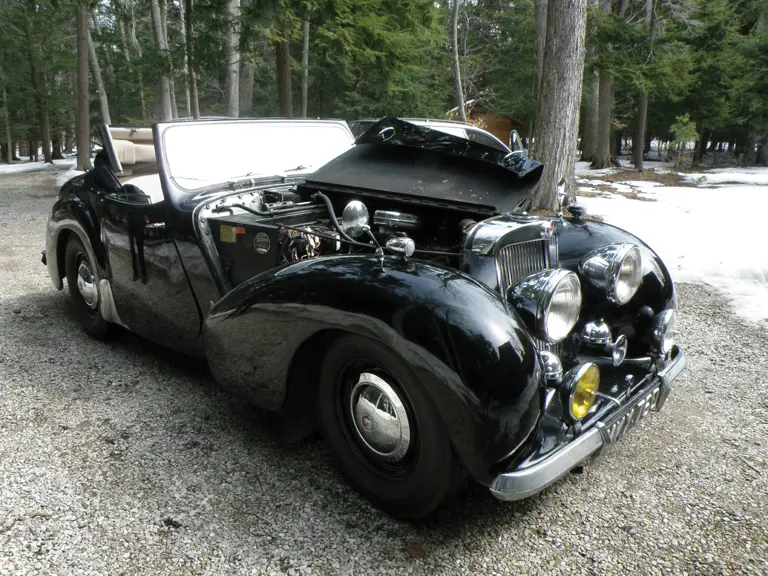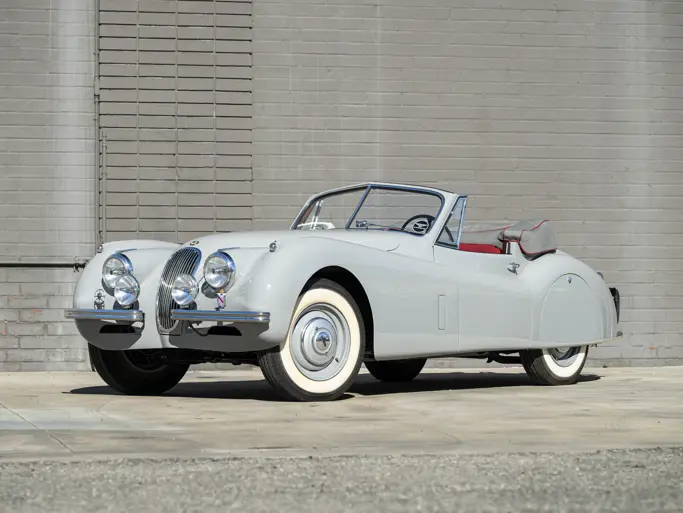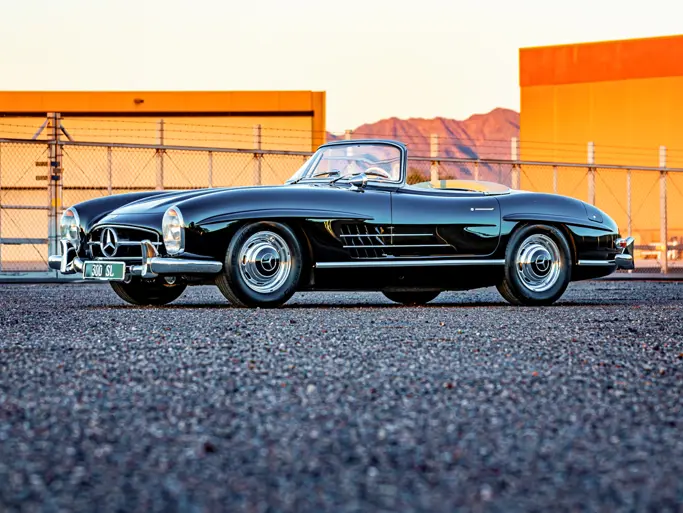 | Auburn, Indiana
| Auburn, Indiana
The origin of this model goes back to 1944, when Sir John Black, head of Standard Motors, attempted to buy Jaguar. Since Sir William Lyons refused the offer, Sir John decided to buy the brand name from Triumph, whose factory had been completely destroyed by the German Luftwaffe. During the last months of WWII, the development of a new sporty Triumph began. It was set to compete against the Jaguar MK IV.
Sir John wanted a roadster that allowed room for five, utilizing rumble seats – similar to pre-war features of some Triumphs. This forced the design to evolve into a mix of pre-war front and post-war rear, very similar to the Jaguar MK IV and MK V. This unusual Triumph was the last car produced with rumble seats and had a very unique fold-up second windshield for the rear passengers. The body was fabricated from aluminum, which made the car much lighter, more sportive and more fuel efficient than the Jaguar.
From 1946 to 1948, a 1,776-cc engine was used, which was also sold to Jaguar for their MK IV 1.5-liter. Triumph built 2,401 roadsters with this engine. In 1948, a new 2,088-cc was introduced with only three extra horsepower, but the engine supplied a lot of low-end torque and allowed the rare use of a three-speed column shift.
With the introduction of the Jaguar XK 120, after exactly 2,000 vehicles had been built, Triumph decided to end production of the Roadster. The limited success in the early post-war years resulted in about 600 surviving roadsters of both engine configurations, which makes the car less common than the Jaguar MK VI.
This black example has been restored and has a light green leather interior and black soft-top. This car has the 2,088-cc engine and also features wood interior trim, a center placed instrument pod, fender-mounted pedestal mirrors, distinctive bright grille, bullet-shaped chrome headlamps, dual horns and amber foglights. Black steel wheels, blackwall tires and factory hubcaps complete the presentation of this quite uncommon Triumph.





